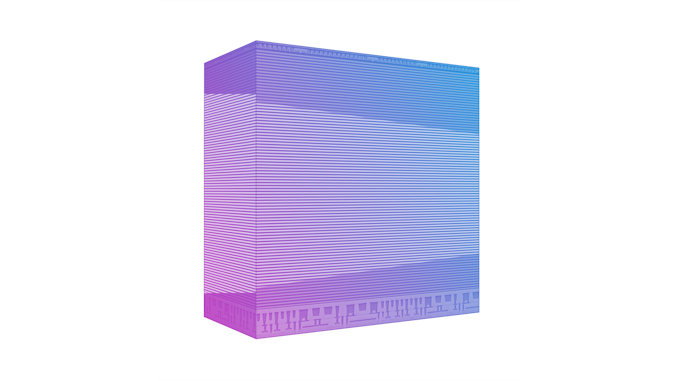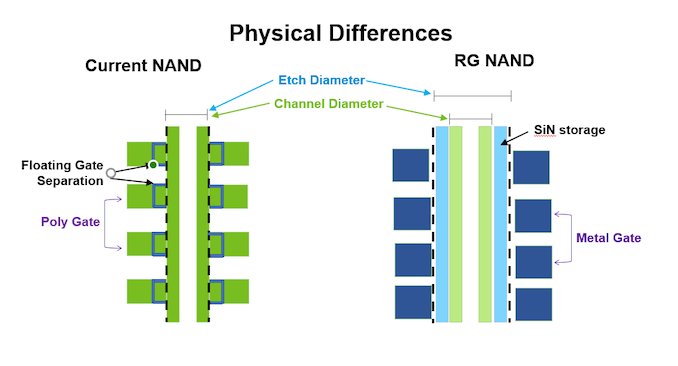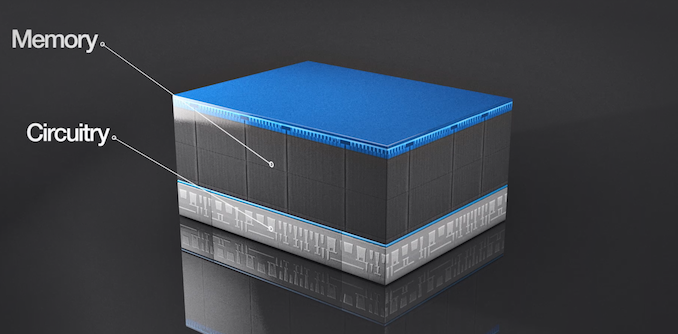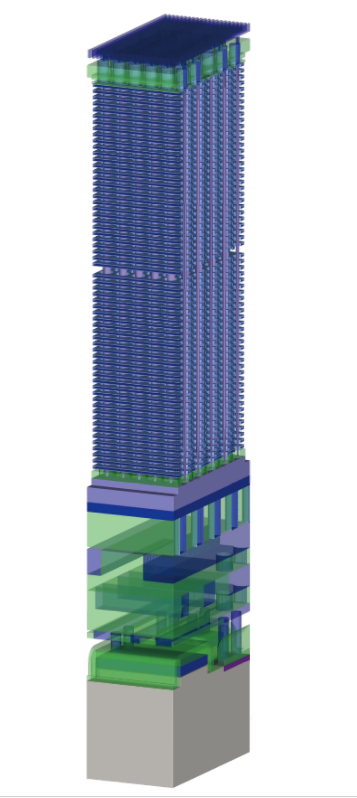Micron Announces 176-layer 3D NAND
by Billy Tallis on November 9, 2020 4:00 PM EST
Just in time for Flash Memory Summit, Micron is announcing their fifth generation of 3D NAND flash memory, with a record-breaking 176 layers. The new 176L flash is their second generation developed since the dissolution of Micron's memory collaboration with Intel, after which Micron switched from a floating-gate memory cell design to a charge-trap cell. Micron's previous generation 3D NAND was a 128-layer design that served as a short-lived transitional node for them to work out any issues with the switch to charge trap flash. Micron's 128L flash has had minimal presence on the market, so their new 176L flash will in many cases serve as the successor to their 96L 3D NAND as well.
Micron is still withholding many technical details about their 176L NAND, with more information planned to be shared at the end of the month. But for now, we know their first 176L parts are 512Gbit TLC dies, built using string stacking of two 88-layer decks—Micron would seem to now be in second place behind Samsung for how many layers of NAND flash memory cells they can fabricate at a time, and clearly in first place for the total number of layers on a die.
The switch to a replacement gate/charge trap cell design seems to have enabled a significant reduction in layer thickness: the 176L dies are 45µm thick, about the same total thickness as Micron's 64L floating-gate 3D NAND. A 16-die stacked package comes in at less than 1.5mm thick, suitable for most mobile and memory card use cases. As with previous generations of Micron 3D NAND, the chip's peripheral logic is mostly fabricated under the NAND memory cell stacks, a technology Micron calls "CMOS under Array" (CuA). This has repeatedly helped Micron deliver some of the smallest die sizes, and Micron estimates their 176L 512Gbit die is about 30% smaller than the best their competitors currently offer.
The 176L NAND supports an interface speed of 1600MT/s, up from 1200MT/s for their 96L and 128L flash. Read and write (program) latency are both improved by over 35% compared to their 96L NAND, or by over 25% compared to their 128L NAND. Micron cites an overall mixed workload improvement of about 15% for compared to their UFS 3.1 modules using 96L NAND.
Micron's 176L 3D NAND has already started volume production and is shipping in some Crucial-branded consumer SSD products. However, Micron hasn't specified which specific Crucial products are now using 176L NAND (or their 128L NAND, for that matter), so we expect that this is a fairly low-volume release for now. Still, over the next year we should 176L NAND production ramp up to higher volumes than their 128L process ever reached, and we can expect a wide range of products based on this 176L NAND to be released and replace most of what's using their 96L NAND.













29 Comments
View All Comments
Billy Tallis - Tuesday, November 10, 2020 - link
The CMOS under Array design seems to provide plenty of space for peripheral logic at the moment. The interface between stacks of NAND doesn't take up any extra horizontal space, and is only as thick as a few layers of memory cells, so it's not a big concern in that respect—but the impact on yield is something to worry about. And no matter how we get to higher total layer counts, we still have to do something to address the die space taken up by the staircase required to expose every active layer so it can be wired up.azfacea - Tuesday, November 10, 2020 - link
YESSSSSSSSSSSSSSSThis revenge of moore's law. Where you at HDD fanbois ??? I see your RCS is getting smaller as time goes by. 2 years ago when i started exposing HDD for the disaster they are, I would get instant hate from 5000 ppl. now the freq and magnitude of the hate is dropping.
(excluding you npz).
Holliday75 - Tuesday, November 10, 2020 - link
Seek help.Tams80 - Tuesday, November 10, 2020 - link
Urrrghh. Is nothing sacred? Does everything have to be some sort of battle?I second you needing to seek help.
ballsystemlord - Tuesday, November 10, 2020 - link
IDK why you have the "HDDs are a disaster" mentality. I agree with the other 2. Seek help.If you don't feel like seeking help, how about reading this to give you some perspective?
Currently, HDDs are faster on full drive sequential write than QLC SSDs. It's true that SSDs are getting cheaper and they are smaller. But they are not close to HDDs in price-per-TB. By increasing the amount of stored bits, they don't have decent endurance (200TBW), and they don't have decent speed -- although the SLC cache certainly does. SSDs for us normal people also don't have the capacity of HDDs.
Furthermore, HDDs don't require 4 PCIe 4.0 lanes. With AMD having only 24 PCIe 4.0 lanes on their CPUS (the chipset takes 4, so actually only 20), and most MBs having only 1 PCIe 4x 4.0 M.2 slot, there's not enough bandwidth or physical slots for normal people to replace their HDDs with M.2 SSDs. We could use SATA 3 SSDs, but then you loose both speed and, in the case of TLC SSDs, also endurance.
I'd love to get cost effective SSDs, with amazing speeds, mind boggling capacity, and great endurance all connected to my PCIe 4.0 CPU. But it's not happening any time soon.
Calin - Wednesday, November 18, 2020 - link
"Furthermore, HDDs don't require 4 PCIe 4.0 lanes"Neither do SSDs. As long as you are happy with HDD access speed, you can multiple SSDs on a single PCI-E lane.
The problem is that you _want_ the speed from the SSD/NVRAM, so you MUST use enough PCI-E lanes.
alphasquadron - Tuesday, November 10, 2020 - link
HDD fanboi here. You wait, we're not done yet. We're making bigger HDDs than ever before, you wait, it's gonna be the biggest HDD you've ever seen. Suck it, wooooooooooo.azfacea - Tuesday, November 10, 2020 - link
I take that back, the hate is still strong.ballsystemlord - Tuesday, November 10, 2020 - link
Hate? -> "I'd love to get cost effective SSDs..."Dizoja86 - Thursday, November 12, 2020 - link
It's not the debate about SSD's vs HDD's that people hate here. It's your needlessly obnoxious approach to the discussion.